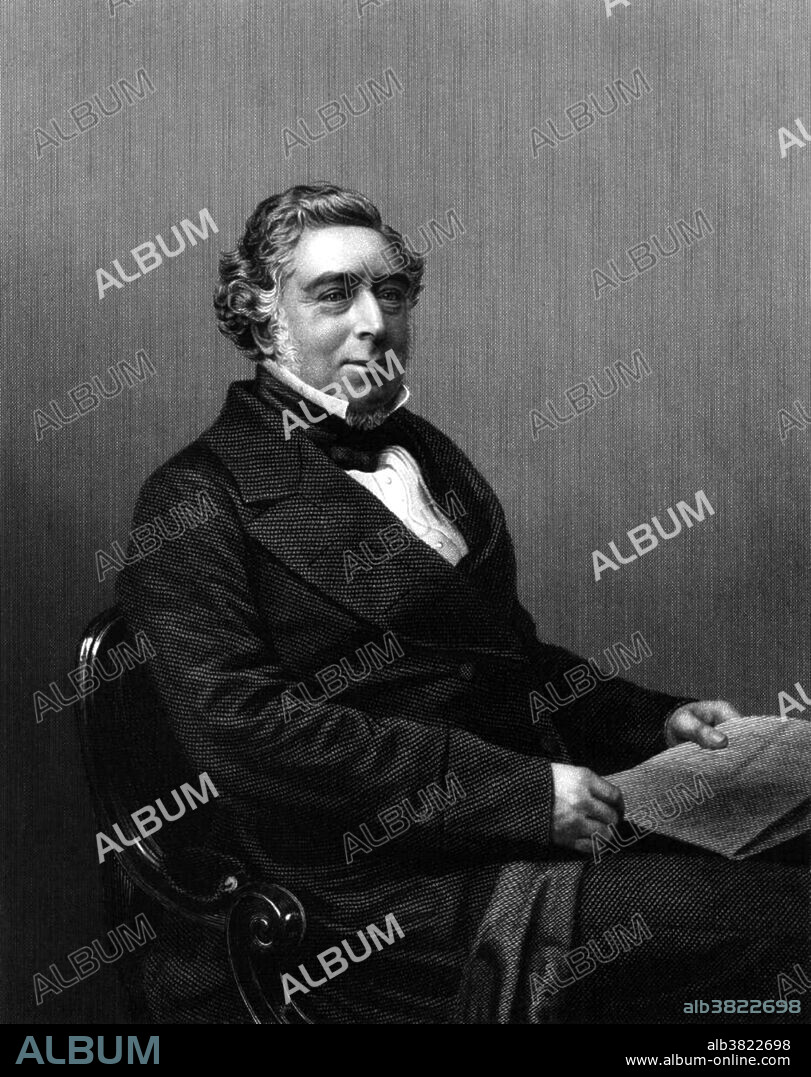alb3822698
Robert Stephenson, English Civil Engineer

|
Añadir a otro lightbox |
|
Añadir a otro lightbox |



¿Ya tienes cuenta? Iniciar sesión
¿No tienes cuenta? Regístrate
Compra esta imagen

Título:
Robert Stephenson, English Civil Engineer
Descripción:
Traducción automática: Robert Stephenson (16 de octubre de 1803 - 12 de octubre de 1859) fue un ingeniero civil inglés, hijo de George Stephenson. En 1823, fundó una empresa en sociedad con su padre, Michael Longridge y Edward Pease, para construir locomotoras de ferrocarril. Las Forth Street Works, fueron las primeras obras de locomotoras del mundo. Pasó tres años en Sudamérica trabajando como ingeniero en las minas de oro de Colombia. Trabajó en el desarrollo de una locomotora para competir en los próximos Rainhill Trials. El resultado fue el Rocket, que tenía una caldera multitubular para obtener la máxima presión de vapor de los gases de escape. Tras su éxito, la empresa construyó locomotoras para los ferrocarriles de Leicester y Swannington. En 1830 diseñó Planet, una locomotora mucho más avanzada que Rocket. También construyó varios puentes conocidos para llevar las nuevas líneas ferroviarias. De 1851 a 1853 construyó el ferrocarril de Alejandría a El Cairo, que se amplió hasta Suez en 1858. Murió en 1859 a la edad de 55 años. En su panegírico, fue llamado "el mayor ingeniero del siglo actual".
Robert Stephenson (October 16, 1803 - October 12, 1859) was an English civil engineer, son of George Stephenson. In 1823, he set up a company in partnership with his father, Michael Longridge and Edward Pease to build railway locomotives. The Forth Street Works, were the first locomotive works in the world. He spent three years in South America working as an engineer in the Colombian gold mines. He worked on the development of a locomotive to compete in the forthcoming Rainhill Trials. The result was the Rocket, which had a multi-tubular boiler to obtain maximum steam pressure from the exhaust gases. Following its success, the company built locomotives for the Leicester and Swannington Railways. In 1830, he designed Planet, a much more advanced locomotive than Rocket. He also constructed a number of well-known bridges to carry the new railway lines. From 1851 to 1853, he built the railway from Alexandria to Cairo, which was extended to Suez in 1858. He died in 1859 at the age of 55. In his eulogy, he was called, "the greatest engineer of the present century".
Crédito:
Album / Science Source / Smithsonian Institution Libraries
Autorizaciones:
Modelo: No - Propiedad: No
¿Preguntas relacionadas con los derechos?
¿Preguntas relacionadas con los derechos?
Tamaño imagen:
3450 x 4355 px | 43.0 MB
Tamaño impresión:
29.2 x 36.9 cm | 11.5 x 14.5 in (300 dpi)
Palabras clave:
1803 • 1859 • ARTE • BLANCO Y NEGRO • CIENCIA • DIBUJO • EUROPEO • FAMOSO • FIGURA • GENTE • HISTORIA • HISTORICO • HOMBRE • HOMBRES • ILUSTRACION • IMPORTANTE • INGENIERO DE CAMINOS • INGENIERO • INGLES • LOCOMOTORA A VAPOR • LOCOMOTORA VAPOR • MAQUINA DE VAPOR • MASCULINO • OBRA DE ARTE • PERSONA • PERSONALIDAD • PERSONALIDADES • RETRATO DE HOMBRE • RETRATO • REVOLUCION INDUSTRIAL • SIGLO XIX • STEPHENSON, ROBERT • TECNOLOGÍA • TECNOLÓGICA • TRANSPORTE
 Pinterest
Pinterest Twitter
Twitter Facebook
Facebook Copiar enlace
Copiar enlace Email
Email
